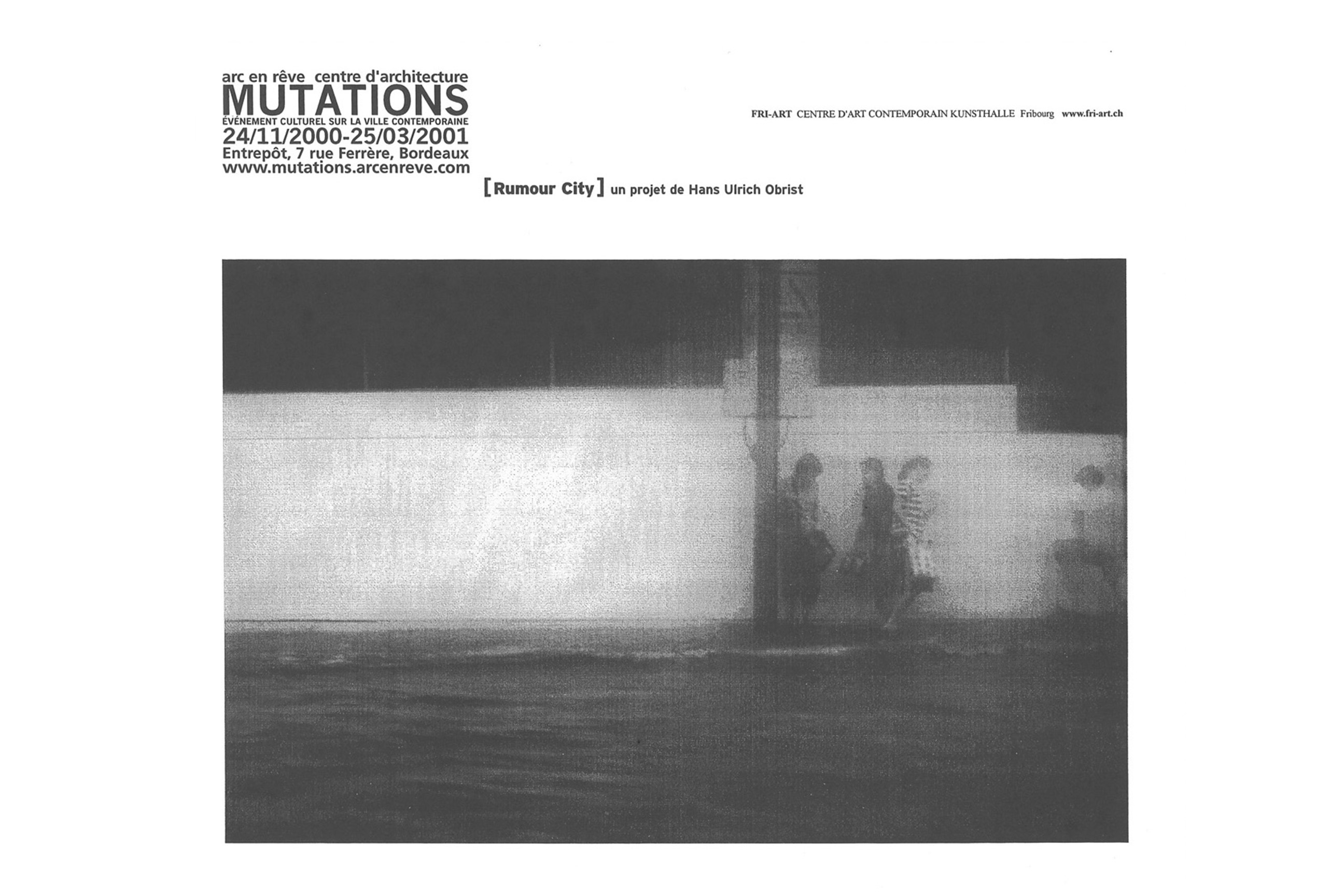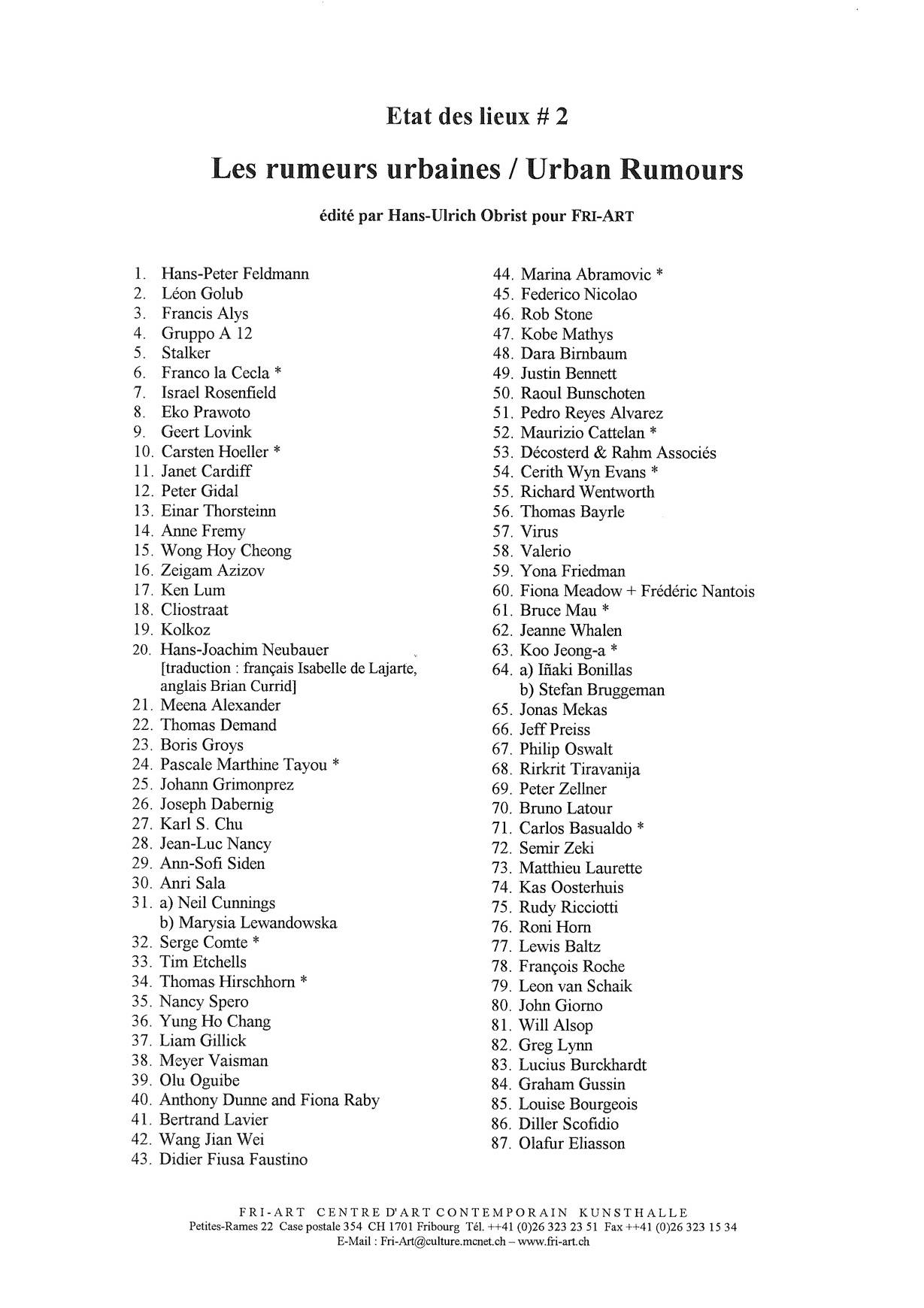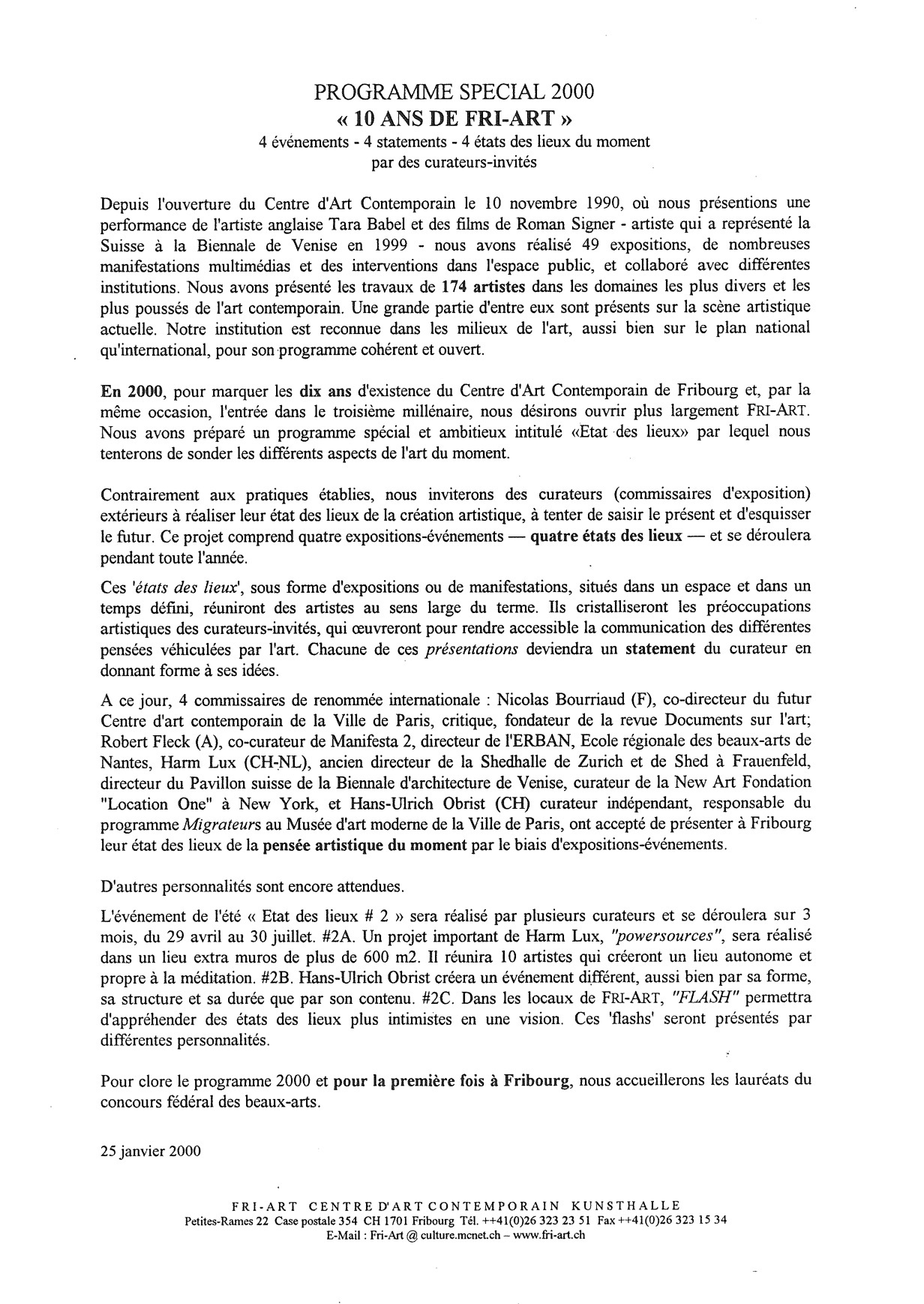Relational aesthetics at Friart

Creating intersubjective spaces has constituted a central approach of contemporary art since the beginning of the 1990s. Human beings have moved to the fore and become an essential component of artwork in which art is integrated into life. Nicolas Bourriaud’s theory of relational aesthetics, set out in 1998, refers to this turning point by examining artistic approaches or the changes in artistic practices in the 1990s. This theory evaluates art works on the basis of the interpersonal relationships they represent, produce and call into being. Relational art does not thus arise from an autonomous, closed space but, both in theory and practice, rather puts the accent on human relationships and social contacts as a whole. Within this framework, several key components have come to the fore at Friart. The exhibitions Contacts and Urban Rumours were held on the occasion of the Kunsthalle’s tenth anniversary in the year 2000. Four exhibitions or events were organised throughout the year as part of the anniversary, in order to offer a critical perspective on the contemporary artistic landscape. To this effect, external curators were invited to carry out four États des lieux (inventories). Contacts inaugurated États des lieux #1 by suggesting a sociological approach to the informal economy, which was growing rapidly at the time. Mutual exchange, tailored services, DIY and domestic work were external to the processes of commercial production. They were thus part of a parallel economic universe and, as a result, new forms of social relationships.
In the context of relational aesthetics, several artists presented new forms of communication in their works. Communication was also placed at the heart of the exhibition-event Urban Rumours, a special happening organised for the end of the exhibition États des lieux #2. It took the form of a critical lecture on rumours in the public space and was given by Hans-Ulrich Obrist. Thanks to the contributions of Dominique Gonzalez-Foerster, the discussion that took place in 1999 with Paolo Fabbri on the rumour Valerio helped to highlight the crucial importance of participation (of people), that also represented the future of art. Without willing participants, rumours rapidly die out. The central role of participation was already evident in Zone de Tournage, a work by Dominique Gonzalez-Foerster dating from 1996, which was at once film set and zone of storm, sound and light. Visitors to the exhibition became part of a creative spatial installation, in which they were in turn protagonists and spectators. Comparison with the Renée Green exhibition, Flow, which was held in parallel, provided a foundation for the relationship between the private and the public sphere to be discussed. Participation within a broader exhibition space was further explored in 2001 with Everything 2 SF (Money Minimal) from Surasi Kusolwong, which saw the Kunsthalle transformed into a sort of sales platform. Everyday objects imported from Ayutthaya, Kusolwong’s native city, were sold there, all at the identical price of two Swiss francs. This work put the everyday firmly to the fore at the same time as questioning the consumer society and the art market. In the same way as the (art) market needs its clientele, receivers (the audience/users of the art space) also occupy a central place in the theory of relational aesthetics or relational art.
Text written in collaboration with Désirée Gross, presented as part of the exhibition Friart est né du vide. L’esprit d’une Kunsthalle, MAHF Museoscope, 27.08–17.10.2021.
Sources: Nicolas Bourriaud, Relational Aesthetics, Dijon: Les presses du réel, 2002.
Translation: Jack Sims


